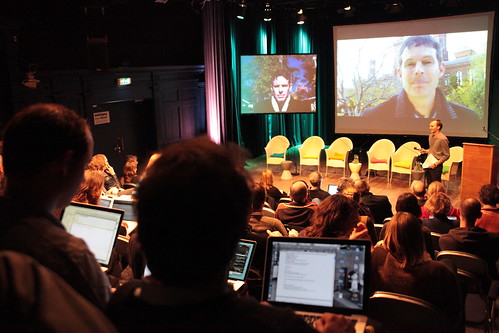Michael Edson on the Smithsonian Commons

This is a blogpost originally posted on the Economy of the Commons Blog.
Michael Edson, director of Web and New Media Strategy for the Smithsonian Institution and Smithsonian Commons talks about how the Institute will make all Smithsonian resources available to the public. The Smithsonian Institution is the world’s largest museum complex and research organization composed of 19 museums, 9 research centers, and the National Zoo. Toghether these museums, research centers and other initiatives have a database of over 137 million resources.
The Smithsonian Institution tries to accomplish four grand challenges: To unlock the mysteries of the universe, understand and sustain a biodiverse planet, value world cultures and understand the American experience. In doing so, they completed a Smithsonian Web and New Media Strategy in 2009 “that describes an updated digital experience and a new learning model.”
Michael continues “Our job in this era is to make people outside succesful in what they do”. The Smithsonian resources should therefor not only be available for experts and people inside the community, they should be available to everyone. This idea resonates through the Smithsonian Commons: an online platform dedicated to free and unrestricted sharing of Smithsonian resources that encourages new kinds of learning and creation through interaction with Smithsonian research, collections, and communities.
Attempting to directly monetize access to, and use of, museum content does not
appear to be a sustainable business model, according to Michael. Instead the resources should be vast, findable, sharable and free. Michael recognises that in a web 2.0. environment the best you can do is to create a large and ongoing communication in engaging enthousiasts. “Many positive things flow out from that.” Examples of those positive things are increased donations, purchases, and sponsorship revenue.
In an attempt to visualize the Smithsonian Commons, Michael shows a video of an amateur astronomer who, with the use of the Smithsonian resources gets more engaged in astronomy, the community around it while broadening the reach and impact of the Smithsonian’s primary resources.
Still a new revenue model is needed and even Michael doesn’t know yet what that is going to be. The budget for the project is 20 million to fulfill the vision of the Smithsonian Commons for the first five years, and fundraising has just begun. These years will be those of trial and error in trying to understand the entire user experience. The focus will therefor be on research and development with some support of e-commerce.
The Smithsonian Commons prototype is still in development. Michael wraps up by inviting everybody to share their thoughts on new revenue models, business strategy or make suggestions in the online charter and wiki-page of the Smithsonian Commons prototype.
